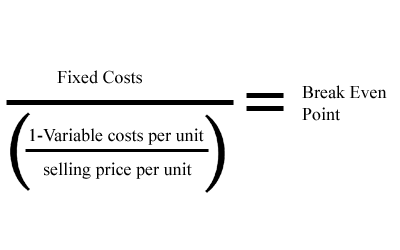How to Price your eCommerce Products
One of the most crucial calculations you'll perform for an eCommerce website is determining the selling price of a product. There are numerous elements to consider before determining your best final price. It can be a rather simple calculation once you have your formula in place. The most important thing is to understand the aspects to consider for your company.
Needless to say, pricing entails more than merely adding a profit margin to your charges. There are several pricing tiers to consider, and in the end, you must choose the one that best suits your business and brand.
Cost-based pricing
1. Finding your break-even price and the cost margin
Finding the genuine cost to the organization is the first step in pricing any item. To do so, you must consider ALL of the costs associated with any product you sell. Unit expenses, transportation costs, promotion, website administration, fabrication, administration, and even expected breakage and returns must all be considered.
You now know how much money you'll need to break even on the product. This is the price at which you break even, and profit margins are applied on top of that.
2. Basic profit margin
Many people automatically add 100% to the break-even price and label it a profit now that they have the break-even price. However, there is more to fundamental profit than that. You must also take into account your overheads and payroll.
It's impossible to calculate exactly how much each product contributes to a paycheck, but you still have to pay them. After a few months of operation, you'll have a good notion of how much you can expect to sell in a particular period of time. You also know how much money you'll have to spend throughout that period. If you don't want overheads to eat into your earnings, divide those costs across your total sales forecast and modify your price accordingly.
Market-based pricing
Firstly determine your market position. Are you a cheap shopper, a luxury exclusive shopper, or something in the middle? It's critical to understand what your competitors are charging, and not simply so you can undercut them. Remember that lowering your prices too low may cause your market to perceive you as a "cheap" brand rather than an honest salesperson. It's a good idea to research other people's pricing tactics in your sector. You want to make sure you're following your brand's plan.
Customer-based pricing
In a dynamic market, you should never be static. You must keep your customers satisfied and ensure that they see you actively performing, otherwise they may lose interest. We're all aware that marketers employ a variety of techniques to elicit the irrational "purchasing" side of the consumer. Your business model will determine which of these you use. If you want to be viewed as a high-quality, upper-cost bracket store, you'll choose a different set of triggers than if you want to make enormous turnovers by being a "cheap" store.
Price your products differently
If you're selling two pairs of denim jeans that cost the same to acquire but differ slightly in features (one is a slim jeans and the other is a bootleg), you might be tempted to offer them both for the same price. It appears to be logical. However, you should not do so. Instead, by selling your products at slightly varying costs, you may show your consumer that you notice the minor distinctions in your products. It creates a sense of superior value, and both products will sell better as a result.
Anchoring
This is a tried-and-true strategy devised by street hagglers many years ago and still employed by many today. It's frequently seen on menus. The primary premise is to have something on the page that is at least 50% (if not more) expensive than the other things. By combining high and low-priced items, you give bargain seekers the impression that they are receiving a good deal. This is due to the fact that the high price acts as an anchor in their minds against which all other prices are assessed.
Which is better: above or below?
Choose whether you wish to undercut or outperform your competitors. This identical notion can be used in either direction.
If you want to undercut your competition and can work out a deal with your suppliers that allows you to do so while still making a profit, you can earn a reputation for being cost-effective. On a small scale, however, this is difficult to achieve. It might be tough to persuade customers to change their minds once they have formed an opinion about where you fit on the quantity vs. quality scale. You'll need to stick to your decision.
Promotions & discounts
To keep your customers interested, you must vary your prices on a regular basis. Running deals with promo codes can be a terrific method to get rid of excess inventory or debut a new product. It's also a wonderful technique to get people to visit your site.
Bundle deals are another great approach to provide a special deal. You can know more about bundling from this article. If a customer buys two items, you can give them a third one for free. You can also combine things (for example, buy the shoes and get free socks) or build bulk offers (for example, if a consumer buys five pairs of socks, they would pay less per pair than if they buy them separately).
Stack discount codes, discounts field on cart, combine discount codes, run multiple automatic discounts and more!





